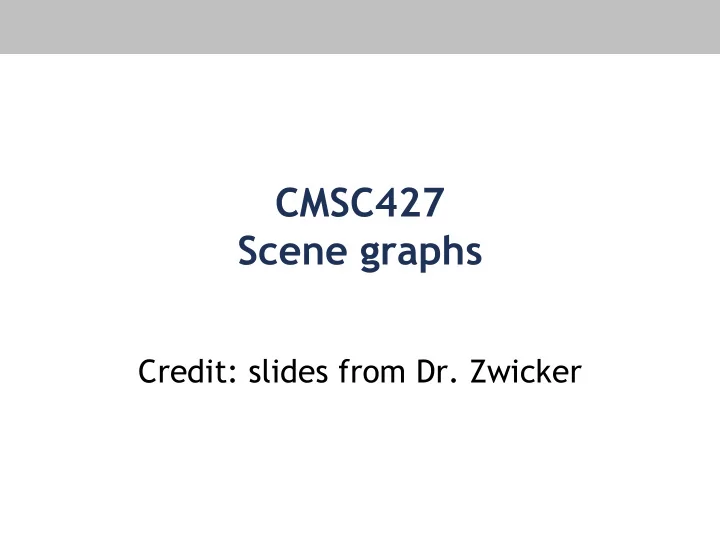

CMSC427 Scene graphs Credit: slides from Dr. Zwicker
Today Scene graphs & hierarchies • Introduction • Scene graph data structures • Rendering scene graphs • Level-of-detail • Culling 2
So far: rendering pipeline Scene data GPU Vertex processing, modeling and viewing transformation Projection Rasterization, fragment processing, visibility Image 3
System architecture Interactive applications • Games, virtual reality, visualization Rendering engine, scene graph API • Implement functionality commonly required in applications • Back-ends for different low-level APIs Low-level graphics API • Interface to graphics hardware 4
System architecture Interactive applications • Thousands Rendering engine, scene graph API • No broadly accepted standards • Java3D, Ogre3D, OpenSceneGraph, jrtr, ... Low-level graphics API • Highly standardized • OpenGL (jogl), Direct3D 5
Scene graph APIs Common functionality • Resource management – Content I/O (geometry, textures, materials, animation sequences) – Memory management • High level scene representation – Scene graph • Rendering – Efficiency – Advanced shading (materials, shadows, etc.) Game engines • Networking, physics, AI, etc. http://en.wikipedia.org/wiki/Game_engine 6
Scene graph APIs • APIs focus on different clients/applications • Java3D ( https://java3d.dev.java.net/) – Simple, easy to use, web-based applications • OpenSceneGraph ( www.openscenegraph.org ) – Scientific visualization, virtual reality, GIS (geographic information systems) • Ogre3D ( http://www.ogre3d.org/ ) – Games, high-performance rendering • jrtr – Under development… 7
Recommend
More recommend